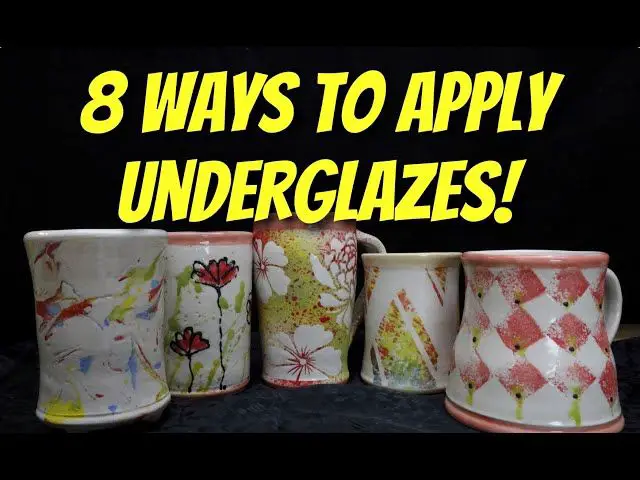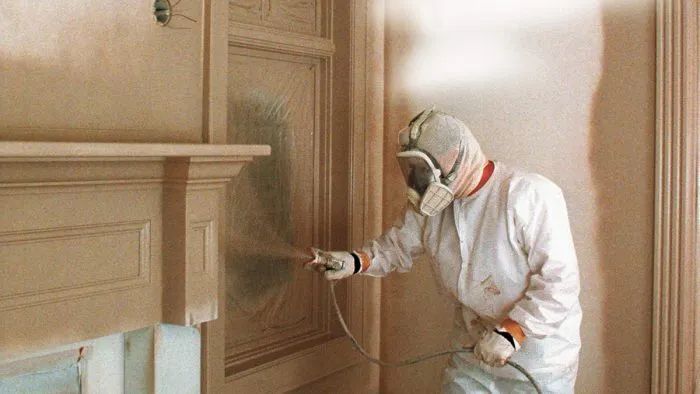When Should You Apply Underglaze?
What is Underglaze?
Underglaze is a colored decorative coating used on pottery and ceramics before they are fired in a kiln. It is made from ceramic stains mixed with clay and water to form a thick, opaque liquid that can be brushed or painted onto the surface of clay pieces.
There are several types of underglaze:
- Commercial underglazes – These come premixed in a wide variety of colors. They are formulated to be compatible with specific overglazes.
- Underglaze pencils – These contain underglaze in a solid pencil form for detail work.
- Underglaze washes – Very diluted underglaze used for staining or blurring effects.
Underglaze serves several artistic functions:
- It can be used to decorate greenware or bisqueware before applying a transparent overglaze.
- It allows intricate decorative techniques like hand-painting, masking, linework, and more.
- The colors remain bright and vibrant even after firing.
When to Apply Underglaze
There are two main options for when to apply underglaze in the pottery process – either to greenware or bisqueware. Greenware refers to unfired clay that has dried and hardened enough to handle. Bisqueware is clay that has been fired once at a low temperature to further harden and prepare it for glazing. There are pros and cons to applying underglaze at each stage.
Applying underglaze to bisqueware allows for greater design control since the piece will not shift or warp during firing like greenware can. The bisque also provides a nice porous surface for the underglaze to soak into and adhere well. However, some prefer applying to greenware because it allows the underglaze to fuse into the clay body for a more integrated look after glazing and firing. The greenware also absorbs more underglaze for bolder results.
In terms of applying underglaze before or after glazing – underglaze is typically applied before glazing as it needs the glaze fired over it to become permanent. However, some potters do a technique called “overglazing” where underglaze is applied on top of a base glaze layer. This can create unique effects but needs to be done carefully to ensure proper fusion.
Overall, most potters recommend applying underglaze to bisqueware before any glazing if aiming for precise designs. Applying to greenware can achieve beautiful blurred effects. Overglazing with underglaze is an advanced technique but can produce striking results when done properly.
Applying to Bisqueware
Applying underglaze to bisqueware has several advantages. Bisqueware provides a porous surface that allows the underglaze to soak in and adhere well (https://potterycrafters.com/applying-underglaze-on-greenware-vs-bisqueware/). The bisque firing also hardens the clay body, making it less likely to smear or warp when applying underglaze. However, any minor imperfections in the bisqueware will show through the underglaze.
To prepare bisqueware for underglazing, the surface should first be cleaned with a barely damp sponge to remove any dust (http://elibrary.pcu.edu.ph:9000/digi/AC01/31846142.pdf). Allow the bisqueware to fully dry before applying underglaze. A smooth bisque surface is ideal. You may choose to lightly sand any rough areas. Avoid getting the bisqueware wet as moisture can interfere with underglaze adherence.
Applying to Greenware
Applying underglaze to greenware has advantages and disadvantages compared to applying it to bisqueware. Some key pros of using it on greenware include:
- The underglaze bonds better with the wet clay surface, allowing for sharper details and less brushstroke marks.
- You can carve or etch designs into the leather-hard clay that the underglaze will flow into.
- It’s possible to blend the underglaze colors directly into the surface for smooth gradients.
However, there are also some potential cons to keep in mind:
- The greenware piece must be bone dry before firing or else cracking may occur.
- Application requires careful handling to avoid smudging the underglaze.
- If not fully dry, gases from the greenware can cause bubbling in the underglaze.
To prepare the greenware surface properly:
- Make sure the piece is leather hard, not soft clay. Underglaze won’t adhere well to soft surfaces.
- Smooth any seam lines or imperfections that could cause uneven brush strokes.
- Wipe away any dust or debris that could contaminate the underglaze.
- Test thickness by balancing the piece on a banding wheel at high speed. If it warps, let dry longer.
With proper technique and handling, underglazing greenware can produce beautiful results not easily achieved on bisqueware. Allow plenty of drying time before firing to prevent flaws.
Applying Before Glazing
Many ceramic artists prefer to apply underglaze before glazing their pieces. There are several benefits to this method:
Underglaze can help accentuate the texture and design details of a piece before covering it with an opaque glaze. The underglaze will show through transparent glazes while retaining its original vibrancy. According to China White – Gallon Fundamental Underglaze, underglazes are ideal for highlighting intricate patterns and subtle shapes before glazing.
Applying underglaze first also prevents the underglaze from mixing and muddying with the glaze layer. To prevent discoloration or bleeding, make sure the underglaze has fully dried before applying any glaze according to Mayco UG215 Blush Under-glaze by Mayco Colors. Allow the underglaze to bisque fire as well before glazing for maximum brilliance.
Overall, underglazing before glazing allows ceramic artists to maximize control over the underglaze design. It helps the underglaze maintain its intended color and appearance under the final glaze. Just be sure to let underglaze fully dry first for best results.
Applying After Glazing
Applying underglaze after the piece has been glazed and fired can create interesting decorative effects. The underglaze sits on top of the glazed surface and can be used to add pattern, texture, or color accents.
There are a few benefits to applying underglaze over an already glazed and fired surface:
- Allows you to add decoration on top of a completed glazed piece
- Creates a contrast between the underglaze design and the glazed background
- Gives the option to leave some areas glazed and some with just underglaze
To apply underglaze over an already fired glaze, the surface needs to be clean and free of debris. Lightly sanding the glazed surface can help the underglaze adhere better. When painting on the underglaze, use light coats and avoid applying too thickly or it may crack or flake off during firing. Firing temperature should match the original glaze firing. Pieces may need 2-3 thin coats of underglaze with firing in between to get the opacity and coverage desired [1].
Firing Considerations
Proper firing is crucial when using underglazes to prevent defects like pinholes and crazing. Underglazes are formulated to be fired to mid-range temperatures, typically between cone 04 and cone 6. Firing too low can lead to underglazes rubbing off, while firing too high can burn them out causing faded colors.
It’s recommended to follow the manufacturer’s suggested firing range and schedule for the specific underglaze product. Most can be fired between cone 04 and cone 6. Ramp up the kiln slowly at first, around 200F per hour up to 1000F. Then increase to 300-400F per hour until reaching the target cone temperature. Hold the peak temperature for 10-15 minutes before cooling.
To prevent pinholes, make sure bisque ware is fully vitrified with no exposed porous areas before applying underglaze. Use thin, even coats and allow drying fully between layers. Fire with adequate ventilation. Crazing can be avoided by matching the clay body and glaze coefficients, and not overfiring.
Test firing sample tiles is recommended to dial in the optimal firing schedule. With care taken during application and firing, underglazes can produce vibrant durable results.
Other Tips
When working with underglazes, it’s important to allow adequate drying time between coats. The underglaze needs sufficient time to dry completely before applying another layer or clear glaze on top. Rushing the drying time can lead to cracking or peeling. It’s recommended to allow at least 24 hours of drying time if multiple coats are applied. Thinner coats will dry faster than thicker ones.
Another useful tip is to seal the underglaze design before applying a clear glaze on top. A clear acrylic sealer can be brushed over the completed underglaze work. This creates a barrier to prevent the underglazes from merging and bleeding together when fired under the glaze. The sealer also helps protect fine details and prevent obscuring. Be sure to let the sealer fully dry as well before glazing and firing. Using a sealer allows for brighter, crisper results.https://potterycrafters.com/how-to-use-underglaze/
Common Problems
Underglaze can sometimes cause issues if not applied properly. Here are some of the most common problems that can occur:
Bubbling
Bubbling of the underglaze often occurs when it is applied too thickly. According to the Ceramic Arts Daily article “Underglaze problems,” bubbling happens because “the solvent needs to escape during firing.” https://community.ceramicartsdaily.org/topic/21891-underglaze-problems/ To prevent bubbling, apply underglaze in thin, even coats and allow it to fully dry between layers.
Cracking
Underglaze can cause cracking in fired pieces if it is applied too heavily and builds up too thick. As noted on Potters.org, cracking occurs because “the underglaze doesn’t mature at the same rate as the clay body.” http://www.potters.org/subject27295.htm Applying thin layers of underglaze and allowing it to fully dry helps prevent uneven drying and cracking issues.
Bleeding
Bleeding happens when underglaze runs or smears into unintended areas. It is often caused by applying underglaze to greenware or bisqueware that is too wet, or overlapping layers before they are fully dry. Let each coat dry completely before adding another layer or applying a glaze over underglaze.
Conclusion
In summary, the best times to apply underglaze are to bisqueware before glazing and to greenware before the first firing. Applying underglaze to bisqueware allows the colors to be brighter and more vibrant since the bisque firing prepares the clay to absorb the underglaze. When applying to greenware, underglaze can be used alone without a glaze coating. It’s generally not recommended to apply underglaze over an already fired glaze coating. This can cause the underglaze to flake or rub off. Always follow manufacturer instructions for firing temperatures and processes when using underglaze. With some planning and technique, underglaze can produce beautiful designs and effects on pottery.




